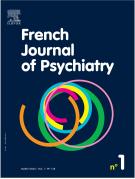Cerebral correlates of switching during verbal fluency task and its impairment in depression: A surface-based morphometry study - 29/05/20
 , G. Robert 1, M. Guillery 1, N. Linz 2, A. König 3, D. Drapier 4, E. Bannier 5, 6, I. Corouge 5, 6
, G. Robert 1, M. Guillery 1, N. Linz 2, A. König 3, D. Drapier 4, E. Bannier 5, 6, I. Corouge 5, 6Résumé |
Background |
Major depressive disorder (MDD) is a highly disabling disease of which is related to chronic course. Currently, there is no robust prognosis biomarker. Cognitive dysfunction associated with the disease has been shown to predict treatment outcome. However, its cerebral substrate is poorly known. Verbal fluency (VF), which are broadly used neuropsychological test, assess the production of words according to a required criterion within a constrained time frame. During this task, subjects produce words within subcategories or “clusters” and occasionally “switch” to other clusters. The measurement of the cluster size and number of switches are relevant cognitive markers. Deep learning-based computational analysis method have been shown to improve the reproducibility and scalability of this measurement. The main objective of the current study was to characterize the cortical thickness (CT) surface-based morphometry (SBM) correlates of the switching and clustering scores in patients with MDD using an artificial intelligence empowered speech analysis system. The secondary objective was to compare those cognitive scores with the ones of the control group.
Method |
The study included 26 depressed women and 25 matched in age and education level healthy females’ controls. All subjects underwent VF tests and had a structural Magnetic Resonance Imaging (MRI). The clustering and switching scores were assessed using the computational analysis method introduced by Linz et al (ki-elements.de/). SBM was performed using SPM and CAT12 toolbox.
Results |
In the depressed group, we observed a positive correlation between the switching score in semantic VF test and the CT, in few cortical areas. The main significant correlation was found in the left lingual gyrus (P=0.003). The switching scores were lower in the depressed group in each VF task (P=0.019 and P=0.007). There was no difference between the two groups concerning the cluster size.
Conclusion |
Our study revealed the relationship existing between the number of switches produced by depressed subjects in a semantic VF task and the CT in prefrontal regions and in more posterior areas. These results possibly suggest that switching and clustering scores assessment in VF tasks, and its cerebral correlates, may constitute potential prognosis biomarkers for depression. Although much work is still required, the establishment of such biomarkers has substantial implications for reducing the burden of the disease.
Le texte complet de cet article est disponible en PDF.Keywords : Major depressive disorder, Verbal fluency, Deep learning, Cortical thickness, Biomarkers
Plan
Vol 1 - N° S2
P. S49-S50 - décembre 2019 Retour au numéroBienvenue sur EM-consulte, la référence des professionnels de santé.
L’accès au texte intégral de cet article nécessite un abonnement.
Déjà abonné à cette revue ?

